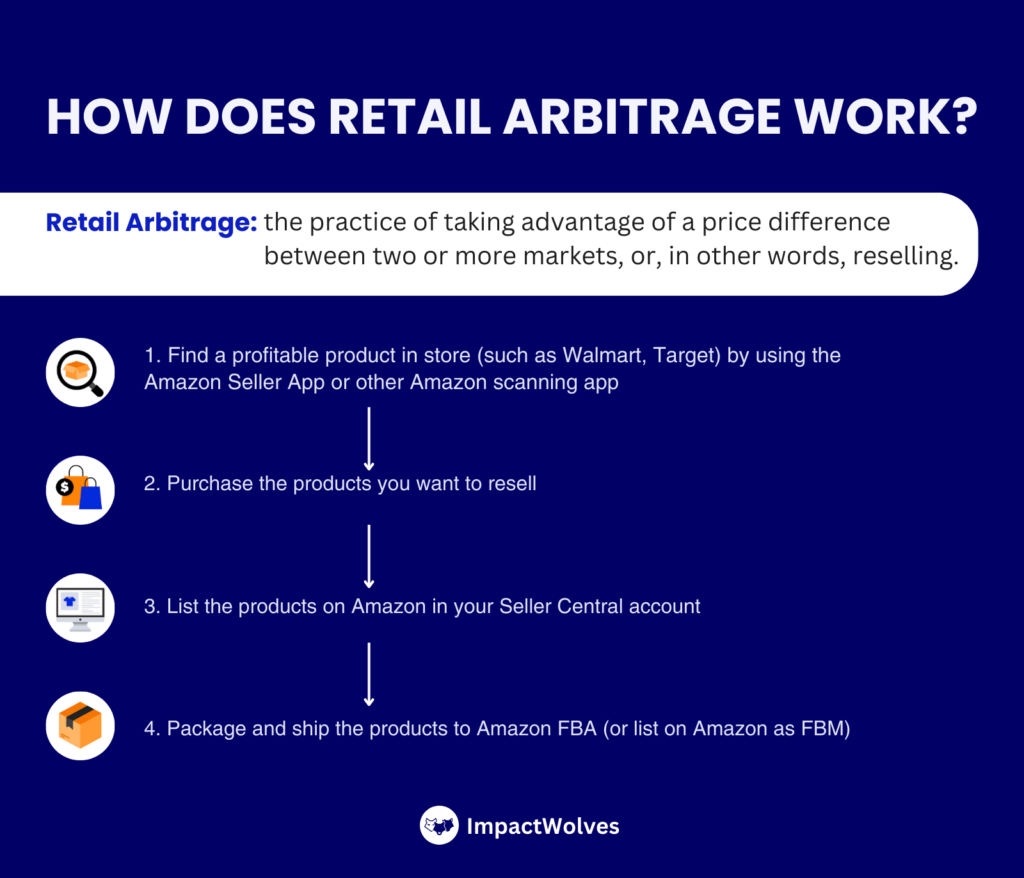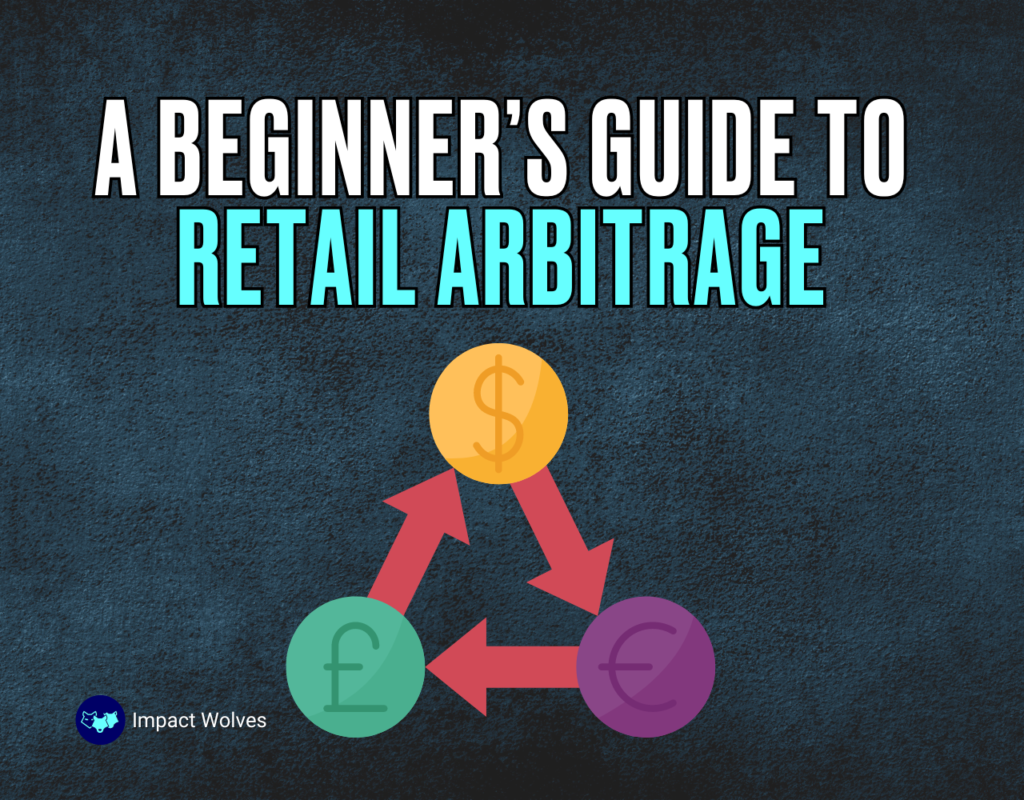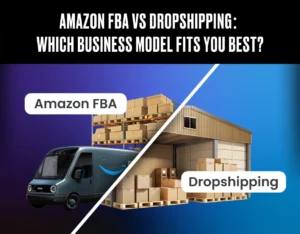Have you ever wondered what is retail arbitrage on Amazon? Here’s a complete guide on retail arbitrage, its use, and everything there is to know about it.
Have you ever thought about selling on Amazon but don’t have a product yet? Why not try retail arbitrage?
Retail arbitrage lets you turn everyday shopping into profit! With minimal investment (you can even source online!), you can start reselling on Amazon in no time.
In this guide, we will tell you all about this beginner-friendly method, how to get started with it, its pros and cons, and some valuable tips to master it.
So…
What is Retail Arbitrage?
Retail arbitrage is a business model where you profit by buying products at a low price and then reselling them for a higher price on a different platform.
Let us break it down for you:
- You Buy Low: You find discounted items at stores like Walmart or Target. This could be during clearance sales, seasonal discounts, or even mispriced items.
- You Sell High: You then resell these items on online marketplaces like Amazon at a price that allows you to make a profit after paying off any fees or costs.
To put it simply, you act as a middleman, taking advantage of price differences between various markets.
How Does Retail Arbitrage Work?
You might think that retail arbitrage is a piece of cake. Well, it is to some extent; however, successful retail arbitrage requires some planning and skills.
You need to be able to:
- Find Good Deals
This involves researching products, understanding retail pricing strategies, and knowing where to look for discounts.
- Source Efficiently
You must consider factors like product availability, competition, and shipping costs.
- Price Competitively
Your pricing needs to be attractive to buyers while still allowing you to make a profit.
Overall, retail arbitrage can be an excellent way to start selling online without a huge upfront investment. However, it’s important to be aware of the competition and potential challenges before diving in!
Now that you know what retail arbitrage Amazon is, let us address one common query related to it…
Is It Legal?
That would be a yes!
Thanks to the first-sale doctrine, it’s legal to buy something and resell it as long as it’s new.
So go ahead and find those great deals and turn your shopping sprees into profits! Just keep in mind that if you claim it’s new, it needs to be in new condition.
Benefits of Amazon Retail Arbitrage
Retail arbitrage offers a low-risk, flexible path to starting your own Amazon business. However, if you’re still contemplating whether you should go for retail arbitrage or not, here are some reasons that will help you make an informed decision:
1. You Can Start Small with Low Investment
Forget about needing a lot of money to start. With retail arbitrage, you can begin with just enough money to buy a few items to resell. As you make money, you can use those profits to buy more items, helping your business grow naturally. It’s a great way to try out being an entrepreneur and see if you can make a profit.
2. You Get to Be Your Own Boss
Retail arbitrage lets you work whenever you want. Like other online businesses, you can make your own schedule and run things your way. You can choose to make it your full-time job or just a part-time gig for some extra money. The decision is up to you!
3. Fast Track to Profits
Starting with retail arbitrage is surprisingly simple. Begin with a few products and add more as your sales grow. It gets easier as you get more experience and learn which products, stores, and pricing strategies work best. The best part is you don’t have to create new products – you just need to get good at finding and pricing them.
4. Minimize Risk, Maximize Potential
Every business has some risk, but retail arbitrage has a good history of making money. The starting costs and possible losses are low, especially if you begin small. As you get more experience and improve your methods, selling popular products can lead to big profits. The main thing is to find the best places to get products and use that to grow your business.
Retail arbitrage is an easy and low-risk way to start in e-commerce. You can set your own schedule, and it’s not hard to get started. Why not give it a try? It might help you discover your entrepreneurial skills!
How to Get Started with Amazon Retail Arbitrage?

Are you ready to transform your shopping sprees into a thriving Amazon business? Here’s a comprehensive step-by-step guide on mastering retail arbitrage:
Step 1: Open Your Amazon Seller Account
When you open your Amazon Seller account, you have 2 options:
- Individual Seller
It is ideal for beginners or those selling less than 40 items per month (it is free, but $0.99 per sale).
- Professional Seller
It is perfect for higher volume sellers or those utilizing FBA. A monthly fee unlocks unlimited listings and FBA’s storage, shipping, and customer service magic (perfect for busy entrepreneurs!
Step 2: Look for Profitable Products to Sell
The next and most important step is to look for competitively priced items with high-profit potential. For this, you can go for:
- Clearance sales and product reviews to identify hidden gems.
- The Amazon Seller App to scan barcodes, compare prices, and view real-time listings, all on your phone!
Step 3: List and Sell Your Products
Optimize your product listings for maximum visibility using the following:
- Relevant keywords
- Complete product information
- High-quality product images
Step 4: Fulfillment Options
Amazon can handle the heavy lifting (storage, packing, shipping, and customer service) for a fee. This will result in faster shipping and enhanced product visibility. Also, know that Prime-eligible products often boost search rankings, so choose wisely!
Step 5: Strategic Pricing
To stay ahead of the competition and increase your chances of winning the Buy Box, keep an eye on your competitors’ prices and adjust yours accordingly. The Buy Box allows customers to add items directly from your listing, making it prime real estate for boosting sales.
Step 6: Profitability Assessment
Don’t get caught focusing only on the initial sale price. To understand your true earnings, calculate your net profit. Remember to consider all the expenses related to selling on Amazon!, like:
- Amazon’s Fees
These include referral fees (a percentage of your selling price), fulfillment fees (if you don’t use FBA), and storage fees (for storing your inventory in Amazon’s warehouses).
- Other Expenses
Consider any additional costs, like product packaging, shipping supplies, and any tools you use to research products.
By regularly checking your profits after these expenses, you can make better choices about where to buy and how to price your products. This will help you improve your business and make more money over time.
Step 7: Reviews and Platform Management
Happy customers are essential for your success! Aim to provide great service that gets good reviews. Look at your competitors’ reviews, too. By identifying what they do well and where they fall short, you can find ways to improve and stay ahead.
Follow these steps and keep an eye on market trends, and you’ll be on your way to mastering the Amazon marketplace as a successful retail arbitrage expert! Keep learning and improving to increase your chances of success.
What Products to Choose?
You know what Amazon retail arbitrage is; you know its benefits and how to get started with it. But what about the products to sell?
Here’s a rundown of the top categories arbitrage sellers choose for a successful business:
- Home & Kitchen
From cookware to cutlery, these essentials are always in demand!
- Electronics & Accessories
This category combines cell phone accessories and electronics categories to make a more impactful overall number.
- Arts, Crafts & Sewing
Paints, fabrics, and DIY kits are popular finds.
- Grocery & Gourmet Food
Specialty items and trendy snacks can be profitable.
- Toys & Games
Keep an eye out for seasonal favorites and timeless classics.
3 Must-Dos to Choose Profitable Products
Choosing the right products to sell is super important for success on Amazon. Here are 3 tips to help you maximize your chances:
Tip 1: Leverage Amazon’s Tools
Download their scanner apps, like the retail arbitrage app, and use them to your advantage! These apps reveal key info like:
- Pricing data
- FBA fees
- Shipping costs
- Product weight
- Sales performance
This information will help you make smart decisions, price your products strategically, and ultimately grow your Amazon business.
Tip 2: Become a Pricing Pro
Don’t just list products; compare prices! Look for items cheaper in physical stores than on Amazon. Research your competitors and analyze their pricing, reviews, and marketing tactics.
Tip 3: Stay Restriction-Free
Be aware of restrictions on certain products. Some items might be banned or have manufacturer limitations. Use the Amazon app to check for restrictions before you buy quickly.
By following these tips, you’ll be well on your way to finding profitable products that will help you thrive on Amazon!
Retail Arbitrage: Pros and Cons
But is retail arbitrage as promising as it sounds? Here are some pros and cons for some clarity:
Pros
- Low Startup Cost
Unlike other models, retail arbitrage lets you start with less money. Nearly half of sellers begin with $1,000 or less; some even manage with $500! This low barrier to entry makes it great for entrepreneurs on a budget.
- Fast Profits
You don’t need to create a new brand. Just find a product, set a price, and list it for sale. This way, you can start selling quickly, making faster sales and quicker profits. It’s a great way to turn inventory into cash without the hassle of developing and marketing a new product.
Cons
- Slim Margins
Keep in mind that many sellers make only small profits. Over 60% earn about $5,000 a month, while 25% earn less than $500. Profits can be influenced by competition, pricing, and market saturation. Doing thorough research and choosing the right products are important to increase your earnings.
- Brand Regulations
Selling things on Amazon means following their rules. There are many brands on Amazon, so there are rules about what you can sell. Amazon’s Brand Registry helps brands manage their listings. If you sell things without permission, your account could get in trouble. Follow the rules to stay out of trouble.
Other Amazon Businesses for Being a Successful Seller
The sales world on Amazon is full of opportunities, with different business models to match your goals and resources. Let’s explore some popular options:
- Dropshipping
This is a hassle-free choice. You don’t keep products in stock. When someone buys something, you link them to a supplier who takes care of shipping and customer service. You earn money from each sale, which is a simple way to begin.
- Private Labeling
With this model, you can customize existing products to make them your own. This lets you set prices and create strong customer loyalty. While it can be very profitable, private labeling usually needs a big upfront investment.
- Wholesale
Buy goods in large quantities directly from brands or suppliers at lower prices. This method helps you keep your stock replenished easily and sustainably. It also lets you become an authorized seller, so you don’t have to worry about whether the products are real.
- Handmade Products
Crafting is becoming more popular. It lets you show off what you make and attract customers looking for special handmade items.
Remember, even though retail arbitrage seems easy to start up and progress with, there is a high chance that you will not be able to keep up with all the research and the Amazon rules for selling.
Therefore, if you ever feel overwhelmed, you can get help from an Amazon advertising agency like Impact Wolves.
Enhance Your Retail Arbitrage Business with Impact Wolves
If you are a retailer looking to boost your sales with retail arbitrage, Impact Wolves can help! We empower growing businesses to sell on Amazon.
Our state-of-the-art PPC management system simplifies business building and management, especially for retail arbitrage.
Ready to unlock your full sales potential?
Book a free 30-minute consultation call with our Amazon PPC expert today and see the difference!





